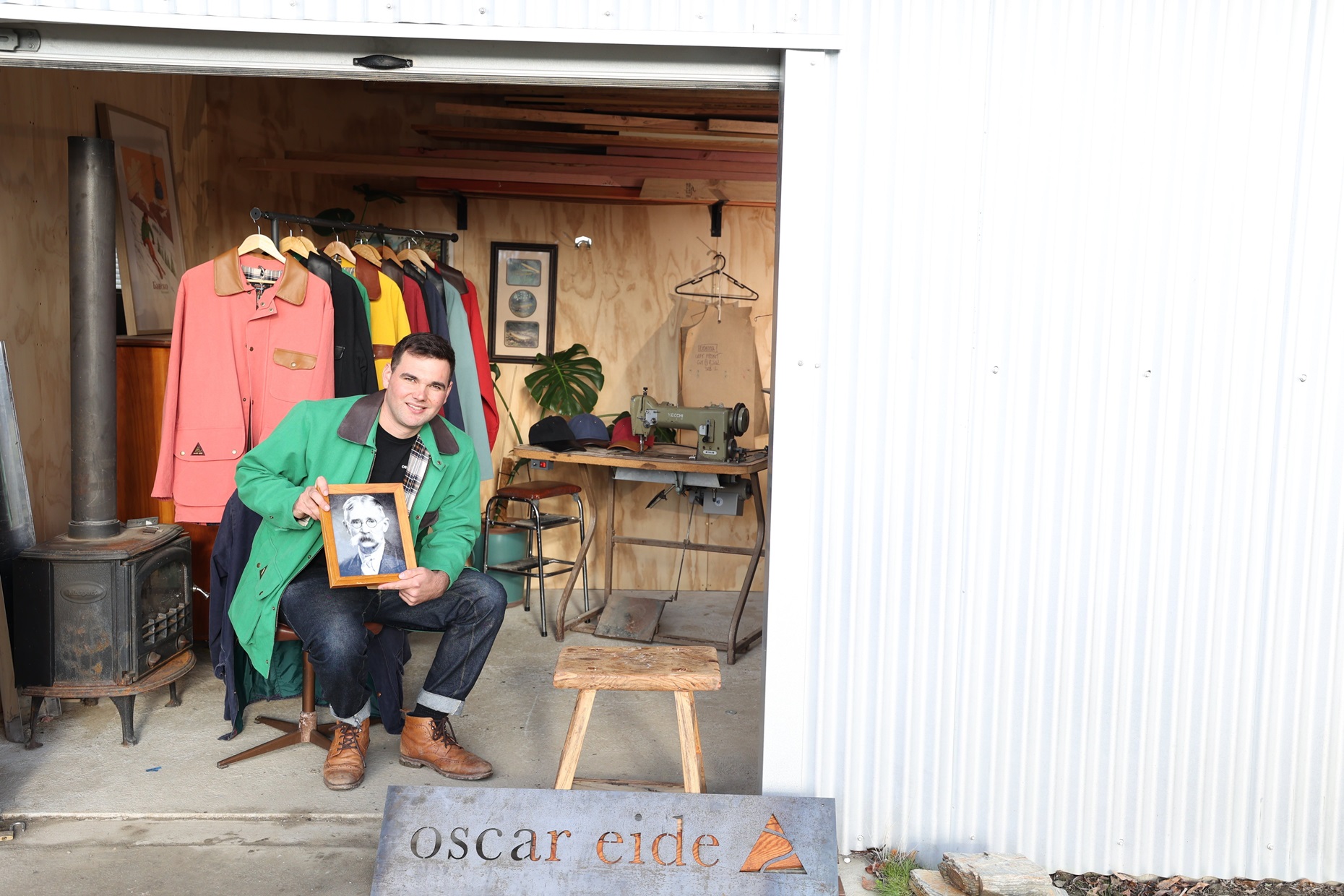

Starting at the beginning of this amazing journey, tell us about the original jacket that started it all.
I’ve always liked vintage gear and a bit of a bargain. I’d been collecting jackets from overseas vintage shops, usually canvas pieces. I really like ’90s jackets and how they age.
That’s when the first Oscar Eide jacket fell into my lap, via a listing on Facebook Marketplace from a Canadian who was leaving town. I was amazed, first by the quality and the design of it.
It felt like New Zealand’s answer to Carhartt in America or Barbour in England, but with some uniquely Kiwi design traits like the leather collar, huge utility pockets, and horse riding vents.
I couldn’t believe we made something like this in New Zealand. I thought it was a remarkable discovery, yet no-one seemed to know anything about it online. That mystery is what hooked me.
What inspired you to relaunch the label?
In the first six months of having the Oscar Eide jacket, I kept going back to research the story online but couldn’t find anything. I became obsessed with trying to find out what happened to this brand.
After having no luck online, I decided to drive up to the original home of Oscar Eide in Whanganui and ask around. I asked people on the street, people at the council, and at the museum ... no-one could really remember.
Still, I got told to go and look at the microfiche the old newspapers kept on record. There I started uncovering articles about what happened to the brand over the years and started piecing together the 100-year history.
It wasn’t until my second trip to Whanganui that a lady from the museum uncovered a man, Hugh Ramage, who wrote the book on Whanganui fashion and filled in some of the gaps for me.
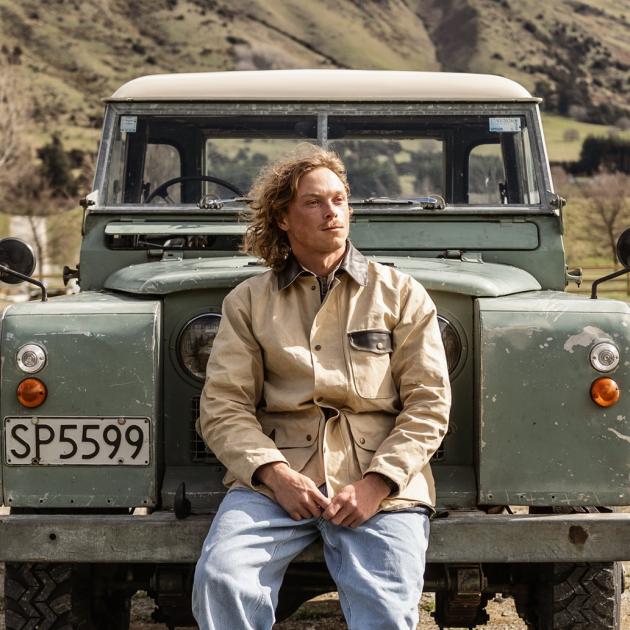
What else did you discover?
It was not until recently, after a recent bit of media, a real blast from the past came out of the woodwork. His name was Barrie Brown, and his father basically started the brand with Oscar Eide in 1921.
he’s now 80 and was coming to Wānaka for a ski holiday, so I sat down with him and did an interview. He read all his father’s old diaries and we pieced together early history, including World War 2 United States Army canvas contracts where Oscar Eide really got its start, making 100,000 canvas bags and tents for the war. There were some really interesting old artefacts.
Tell us a bit about your background/interest in fashion?
To be honest, to my friends and family, I was probably the last person they would have expected to be designing fashion. Out of school in Wellington, I studied marketing but then ended up in the family trade, working as a builder for many years.
I’d always had a creative side and been quite musical and liked to make things, but fashion was something completely new to me and a bit of a challenge. It was something I ended up really loving to learn about, and over the years, with help from Iona Woolgrove (of Umsiko fashion studio in Wellington), I’ve developed my skills on the job without going to fashion school.
I say this all the time, but it really is similar to building. The construction aspect is the same; it’s the design aspect that has been the biggest step up for me. I like to think being a bit of an outsider, I bring a fresh approach to what Kiwi design and New Zealand workwear can be.
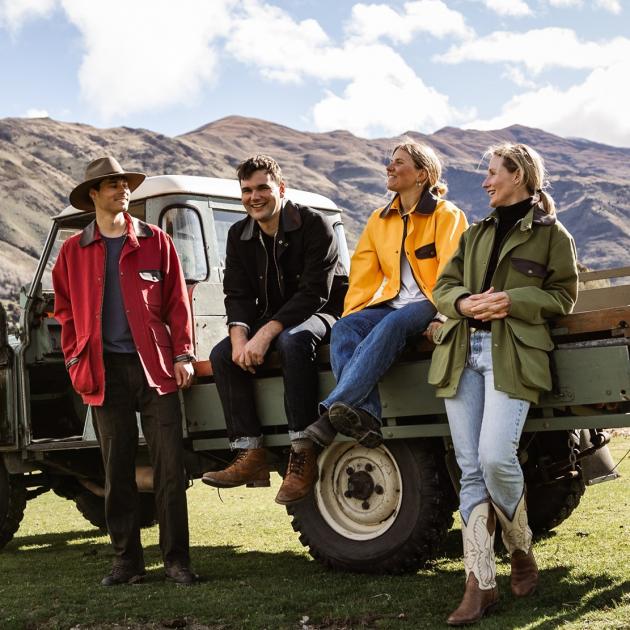
Talk us through the materials you’ve chosen to use.
I searched all over the world to try and find the best canvas I possibly could. I got samples from everywhere, but one really stood out to me, and that was the Fujikinbai Japanese canvas. In Japan, they’ve kept a lot of their old mills open and still weave canvas on traditional looms. The hand and grain of the fabric were on another level.
Deciding I wanted it was one thing, but creating a deal was another. With no luck getting in contact with them via email or phone, I decided to fly over to Japan.
With some Central Otago wine in one hand and Google Translate in the other, we managed to make a deal and are now great friends.
I’ve just returned from my fourth trip over there on a buying run.
A hallmark of the originals was the leather collar, originally from Whanganui, where they still have the tannery we use today.
What have been/are some of the biggest challenges?
Something I’ve learned on my journey is if you want to be New Zealand-made in 2025, you have to face the realities and limitations of making stuff here.
The same factors that caused Oscar Eide to go under in the first place in the late ’90s are still here, and, in fact, they’ve been turbocharged by faster fashion practices and more free trade with countries with lower labour standards.
What that means in practice is that there’s no longer room to make New Zealand-made stuff at a low or mid range you have to aim high. So that’s what I’ve done: I went out to make the jackets even better than before.
The one thing you do have over fast fashion is story and authenticity. Through platforms like Instagram, you’re able to tell that story and connect directly with people who value quality and transparency. It’s better to make something great in smaller numbers than try to make everything for everyone.
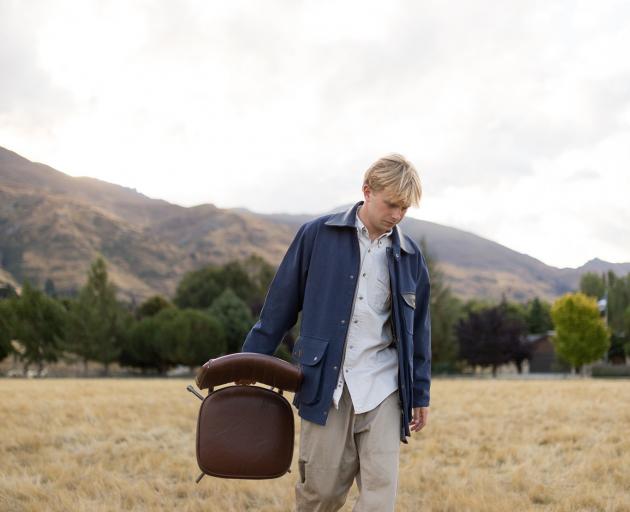
Why did you choose Wānaka?
Wānaka actually kind of chose me. I moved back to New Zealand in 2022 after an OE to help my dad build a house here. The family had this empty paddock on the outskirts of Wānaka, and so I moved back. That’s where I found the jacket, and everything happened.
It ended up being the perfect spot to transplant a brand like this. The landscape and the people here match the product: practical, outdoorsy, quality minded. Wānaka/Queenstown really suit the brand and have the right clientele to keep it going.
You started out working on the label from a bedroom, is that right?
I always knew from a marketing standpoint the story was gold and the product would be amazing, if I could make it.
However, as I was working fulltime as a builder, I didn’t have time to go to fashion school, so I turned to YouTube tutorials in my bedroom, starting on my mum’s old sewing machine and learning the basics.
But to make these jackets at a professional level, I needed help, so I found my patternmaker, Iona, who helped me develop the designs into the first jacket and has been my mentor ever since.
I was living in a sleepout shed in Wānaka, and eventually had two industrial sewing machines crammed in there with barely room for anything else.
Running out of space, I made a deal with my parents: I’d help them build their house on one condition — that they’d let me use their old shed at the end.
I’m now putting the final touches on it, converting it into a workshop space just out of town on the Cardrona side. It’s a bit of a Clarkson’s Farm scenario, where people can come visit, have a coffee, and see how everything works. I’m hoping to have it up and running in the next few months.
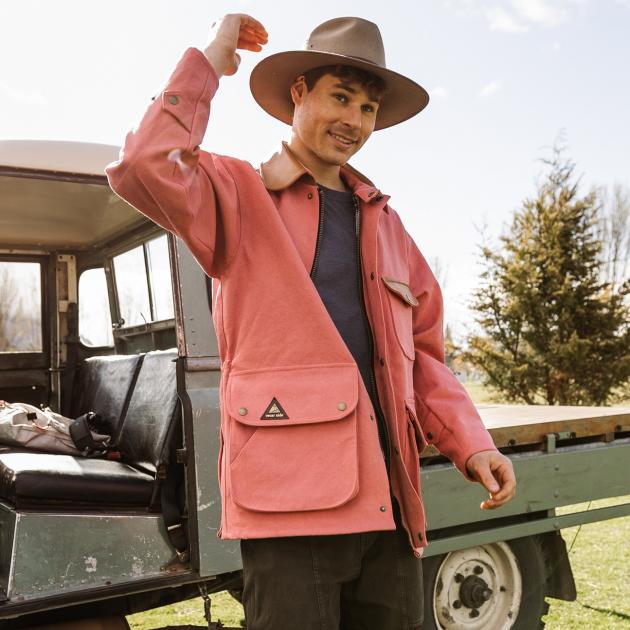
How has it all been going?
Really good! The response has been amazing. After launching at the Wānaka Show, I’ve had to quickly try to put together a second winter run to meet demand.
People in New Zealand and around the world still really respect something that is New Zealand-made. It’s a real testament to the power of storytelling, the fact that I’ve managed to have such sales with no physical store or retailers.
The most surprising thing to me is the repeat customers. Over 30% of my orders are second or third timers.
Jackets have shipped to Japan, Portugal, the US, France, Australia and the United Kingdom. That’s been really rewarding to see.\
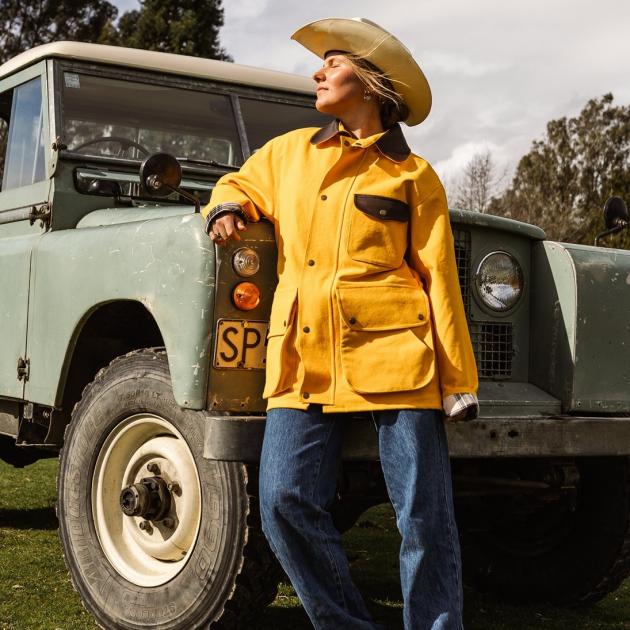
Where to from here?
The goal is to become the heritage brand for Central Otago, something that locals and visitors can be proud of that’s uniquely New Zealand-made. Getting there won’t be easy and will take time, but we’re off to a good start.
The plan over the summer is to open the farm workshop and release the new designs’ new colours and a couple of new patterns that will hopefully push the boundaries of what Kiwi workwear can be.
At the start of all this I was thinking Oscar Eide was going to be more menswear focused, but women have been some of my biggest supporters and customers. I’ve sold out of all the smallest sizes.
Knowing that, I’ve decided to test myself by designing a few pieces just for them for the summer range. I’m excited to release the new range and looking forward to showing off what’s coming up.
I’ve also been working on a vintage-style poster for the heritage jacket. While researching in the archives, I kept finding these incredible old newspaper ads with punchy taglines and striking imagery. They had this confident, no-nonsense energy that felt perfectly aligned with what we’re doing, revitalising classic New Zealand craftsmanship. So I created my own version in that style.
I’m also planning to make a reel showing the whole creative process.
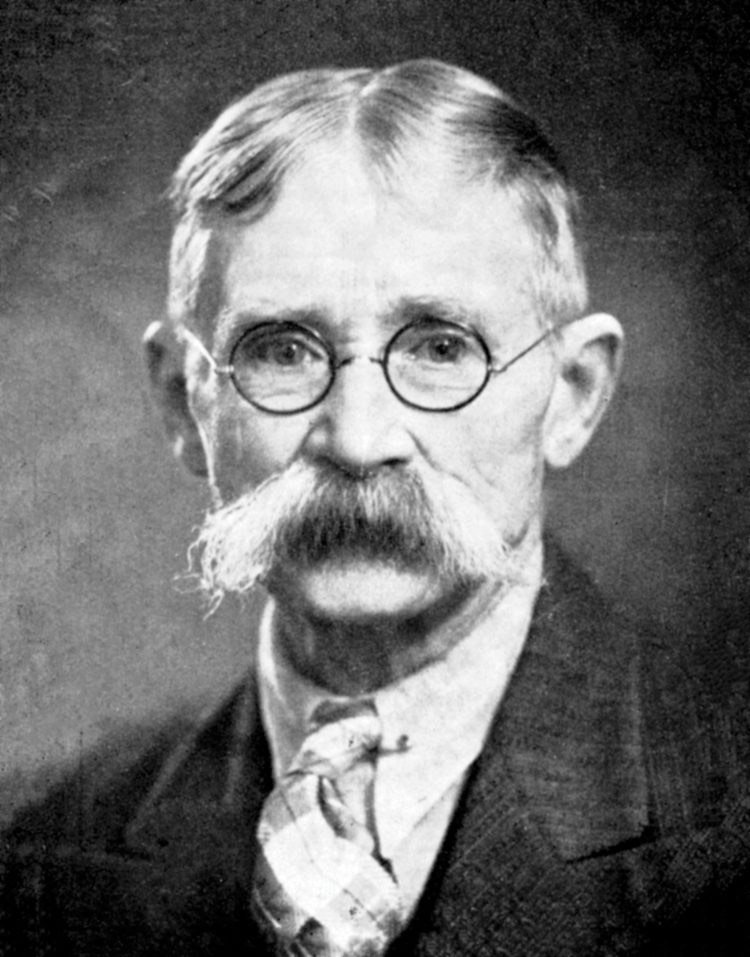
Oscar Eide — a timeline
1900s - A sailmaker lost at sea
Oscar Eide, a Norwegian explorer and sailmaker, set off on a journey around the world, crisscrossing the Southern Ocean. The winds must have been strong because he ended up all the way down in New Zealand, landing in the small coastal town of Whanganui.
1921 - Eide & Co is born
Back then, Whanganui was a hub for textiles and fashion. Ships came and went, trading goods along the river. But Oscar had a problem: steam-powered ships were making traditional sails obsolete. With all the skills and nothing to lose, he pivoted. Eide & Co was born, specialising in tents, awnings and rugged canvas gear made from his favourite material ... waxed canvas.
1930s-’40s - The tent boom
Through the interwar period, Eide & Co became a household name across New Zealand. Its innovative canvas tents were featured in newspapers and magazines. The company was thriving but Oscar had bigger plans.
1950s-’60s - From tents to workwear
By the 1950s, the business had exploded. Eide & Co expanded into a huge factory in Whanganui, hiring hundreds of workers. Farmers across New Zealand were battling the elements, and they needed gear built to last. The company answered with oilskin coats — heavy-duty jackets made for the rugged, windswept landscapes.

1960s - A new era
Oscar Eide died, and new directors took over the company. The business kept growing, but the world was changing fast.
1980s - The EDIX experiment
By the 1980s, new plastics and waterproof technology were on the rise. Canvas was out, synthetics were in. The company rebranded as EDIX, chasing high-tech performance gear. It had mixed success, and ownership shuffled. The brand was starting to lose its soul.
1990s - Oscar Eide back on track
In the 1990s, the brand returned to its roots. The Oscar Eide name was brought back, along with its signature canvas coats. The designs were as strong as ever but trouble was brewing.
2000s - Collapse of NZ manufacturing
The New Zealand government was going all in on globalisation. Tariffs were cut, subsidies scrapped and cheap imports flooded the market. Fast fashion took over. Almost every Kiwi-made brand shut down or moved offshore including Oscar Eide. Just like that, the brand was gone.
2021 - The rebirth
But history has a way of coming back around ... In 2021, a chance encounter with an Oscar Eide original sparked the next generation of Kiwi-made fashion and carrying forward the Oscar Eide legacy creating timeless jackets, designed and made in New Zealand for the modern world.











